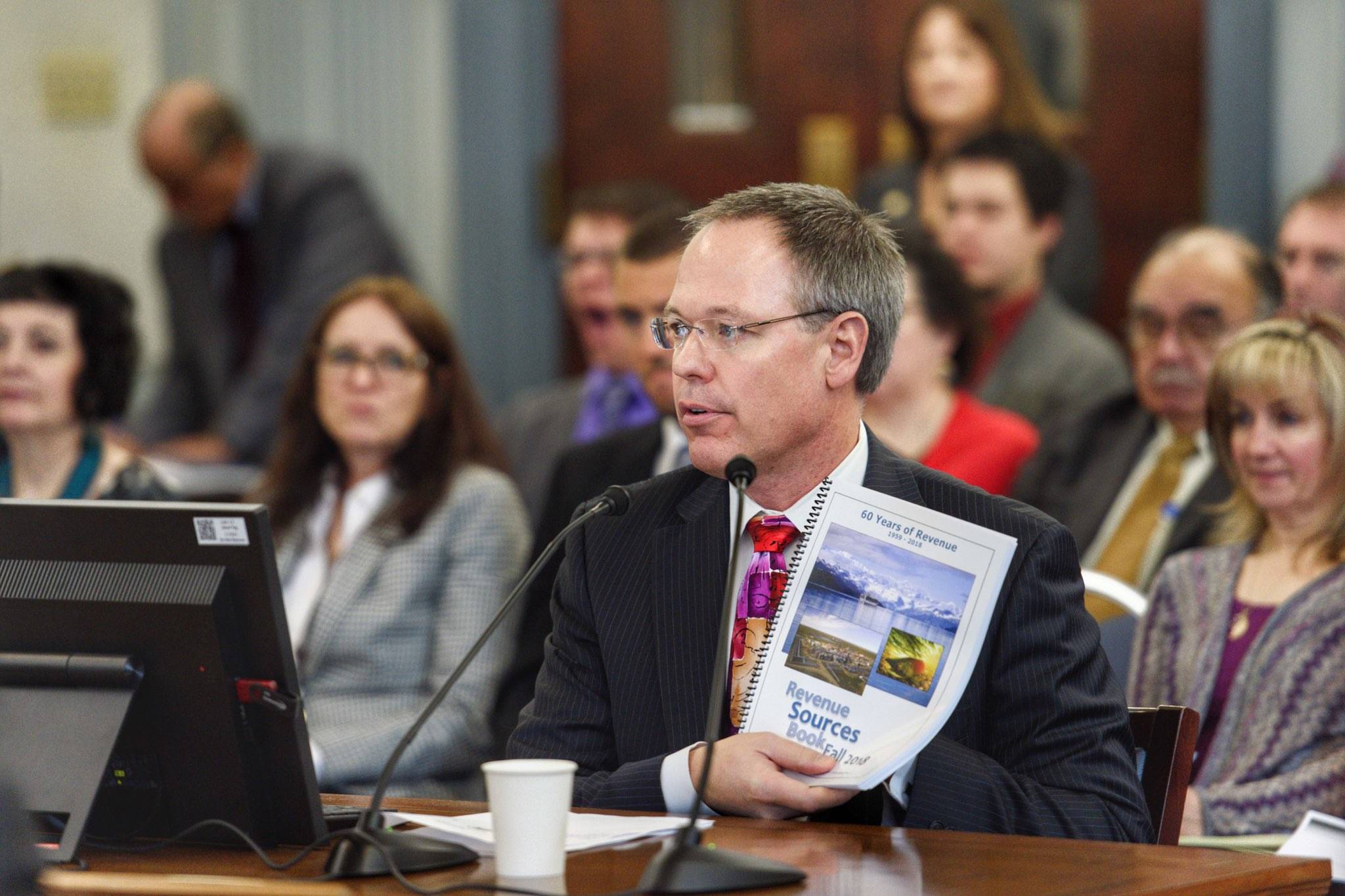Now that the oil market has stabilized, the revenue forecast for the state has changed slightly.
The Department of Revenue (DOR) Commissioner Bruce Tangeman released the spring 2019 revenue forecast Friday, which includes a lower prediction for Fiscal Year 2019 and higher prediction for FY 2020 than the fall forecast.
“When the legislature passed the budget last spring, they were estimating $63 (a barrel) oil and projected about a $700 million deficit for the year,” Tangeman said at a Senate Finance meeting Monday morning. “We now see that the price of oil has been well about $63 (a barrel). … We are forecasting about $69 (a barrel).”
[‘Justice shouldn’t create more victims’: Former prisoners preach patience for SB 91]
The spring forecast includes the department’s updated FY 2019 budget, FY 2020 budget, as well as long-term forecasts for oil price, oil production and state revenue. Not counting transfers from the Permanent Fund, the department is forecasting unrestricted revenue of $2.7 billion in FY 2019 and $2.3 billion in FY 2020, according to a press release from the DOR. Additionally, the Permanent Fund is expected to transfer $2.7 billion to the general fund in FY 2019 and $2.9 billion to the general fund in FY 2020. These amounts are available both for payment of Permanent Fund Dividends and for general government spending.
However, Gov. Mike Dunleavy has proposed paying a larger PFD out to residents rather than using it for government spending like in previous years, which would trigger large cuts in government spending to balance the budget.
FY19 unrestricted revenue forecast is reduced by about $89 million compared to the fall forecast, despite higher forecasted near-term oil prices, according to the DOR presentation. The primary changes to FY19 forecast are:
- Production tax reduced by $80 million
- Non-petroleum corporate income tax reduced by $15 million due to lower than expected payments in December 2018
- Other revenues reduced by $2 million due to a variety of smaller nonpetroleum forecast changes
- Royalties increased by $8 million due to higher oil prices and despite lower production
The unrestricted revenue forecast for FY20 is increased by about $39 million compared to the fall forecast. The primary changes to that forecast are:
- Production tax increased by $45 million due to higher prices, partially offset by lower production
- Royalties increased by $19 million due to higher oil prices and despite lower production
- Non-petroleum corporate income tax reduced by $15 million partially due to weaker nonprecious minerals prices
- Other revenues reduced by $10 million due to a variety of smaller nonpetroleum forecast changes
“We saw quite a bit of volatility in fall 2018,” Tangeman said, which led to a price fall forecast by the department that was initially a little high. When Dunleavy came into office, his department did a forecast that was a little more conservative in December. But now that the market has stabilized a bit, the department is predicting a more positive revenue forecast for 2020.
Alaska North Slope oil prices are forecasted to average $68.90 per barrel for FY 2019 and $66 for FY 2020, according to the DOR.
Long-term (2021 and later) oil price forecast remains unchanged from the fall. That inflation adjusted forecast remains in the low to mid $60s range for the price per barrel of oil.
“We should always recognize that predicting oil prices is a very difficult thing to do. … Right now in the near term there are a lot of factors, including trade, that could disrupt oil production,” said Ed King, the state’s chief economist. “There’s a lot of things that we’re paying attention to that could push that price down. … We don’t really know what’s going to happen in the future and there’s a lot of things that are going to prove our forecast wrong.”
King said there’s nothing that should be alarming of the forecast, because it’s in the range of what most analysts are predicting.
The revenue forecast is also based on projected North Slope oil production averaging 511,500 barrels per day in FY 2019 and 529,500 barrels per day in FY 2020, according to the DOR press release. Production is still expected to remain around 500,000 barrels per day over the next decade as new developments offset production declines from existing fields.
“We don’t assume that a field will come on in five years as predicted at full production at the time they are estimating,” Tangeman said. “The prudent way for the department to account for (production) is to put a risking mechanism in there.”
So while the number hovers around 500,000 barrels for 10 years, which is flat production compared to the past decade, there is upside if some larger fields come on at expected rates, Tangeman said.
The department is also predicting higher than expected prices for development costs for oil fields in the North Slope. Despite that, the revenue from these new fields might be higher than the prediction in the department’s forecast.
“If all of those new fields come in as expected, this could actually end up being a conservative forecast,” said Daniel Stickel, an economist from the Department of Revenue.
• Contact reporter Mollie Barnes at mbarnes@juneauempire.com

